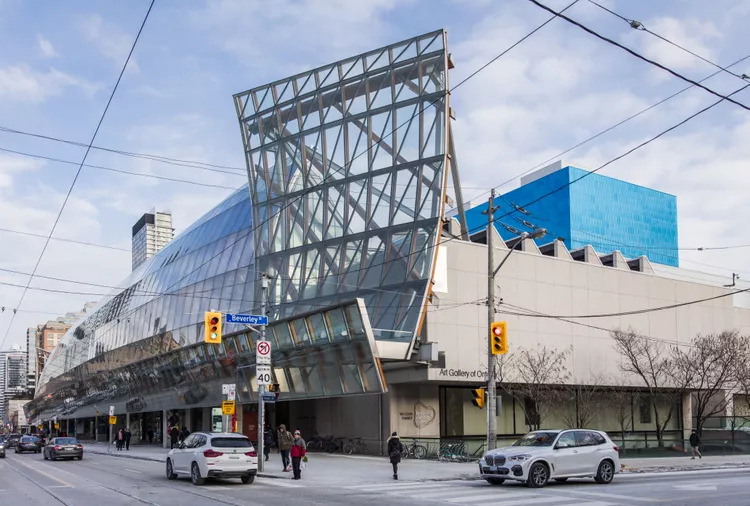Summary of Downtown Toronto Architecture Highlights
The Art Gallery of Ontario (AGO)

Internationally acclaimed architect Frank Gehry designed the renovation to the Art Gallery of Ontario (the AGO). It is widely regarded as an understated Gehry masterpiece. Chock full of Gehry’s favorite materials and visual elements, the AGO features sculptural staircases and a focal-point Douglas fir and glass promenade reminiscent of a canoe.
The Royal Ontario Museum (ROM)

With hardly a right angle in sight, the Royal Ontario Museum’s aluminum and glass clad walls jut and soar, creating a dramatic interior and unique visitor perspectives. Designed by Daniel Libeskind, the “Crystal” is an innovative addition to the traditional buildings, creatively integrated into the overall design.
Distillery District

Located in downtown Toronto, the Distillery District is renowned for having the largest and best-preserved collection of Victorian Industrial Architecture in North America. The area includes former distillery buildings, flour mills, and storehouses, all transformed into a vibrant pedestrian-only neighborhood fostering arts, culture, entertainment and offering a variety of shops, galleries, and restaurants.
Toronto City Hall

Architect Viljo Revell designed the distinctive Toronto City Hall, completed in 1965. Initially controversial, the structure has since gained acceptance as a masterful piece of modernist architecture. The design features two asymmetrical semi-circular towers alongside a saucer-like building, creating a progressive aesthetic that is striking from an aerial view, resembling a large unblinking eye.
Old City Hall

Directly across from Toronto’s current City Hall, the Old City Hall exemplifies the Victorian-era Romanesque architecture that characterizes many of the city’s government and university buildings.
Cabbagetown
Cabbagetown is a delightful residential neighborhood in downtown Toronto featuring the largest continuous area of preserved Victorian housing in North America, as per the Cabbagetown Preservation Association. This area showcases stunning 19th-century architecture, with many homes incorporating modern additions that contrast beautifully against the intricate decorative trim work typical of Victorian-era design.
Sharp Centre of Design

Designed by Alsop Architects, the Sharp Centre for Design is located adjacent to the Art Gallery of Ontario. It provides studio and teaching space for the Ontario College of Art & Design (OCAD). The building’s colorful and playful design resembles a boxy Lego spaceship, adding a vibrant touch to its surroundings, particularly to the traditional OCAD brick structure it straddles.
Leslie L. Dan Faculty of Pharmacy
The Leslie L. Dan Pharmacy Building houses the University of Toronto’s Faculty of Pharmacy, featuring suspended “pod” classrooms that hang into a light-flooded atrium. These classrooms glow in various colors at night, creating a visually stunning effect. This building was designed by Sir Norman Foster and Claude Engle.
The Toronto Dominion Centre

Mies van der Rohe’s innovative design appears commonplace today. However, his “less is more” philosophy, demonstrated in the TD Tower completed in 1967, emphasizes that not all skyscrapers share equal status. The Toronto Dominion Centre evokes strength and power while maintaining a grace that is unexpected in such a large steel and girder structure.
CN Tower

While the CN Tower may not be the most artistic or imaginative structure in Toronto, it represents a significant engineering achievement and – as of 2010 – continues to hold the title of the world’s tallest tower. Erected in 1975, the CN Tower’s height of 553.33 meters (1,815 feet, 5 inches) has become an iconic symbol of the Toronto skyline.





